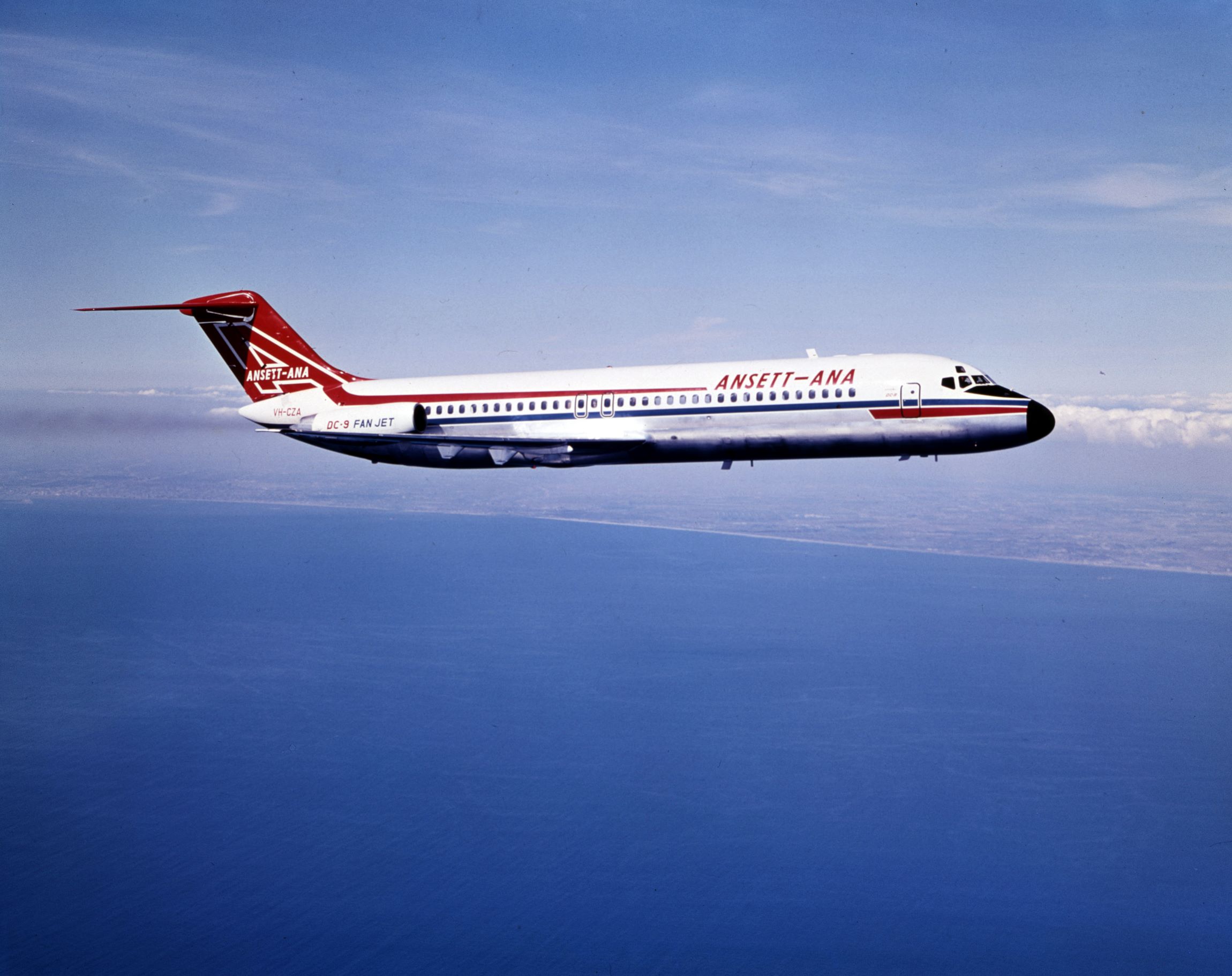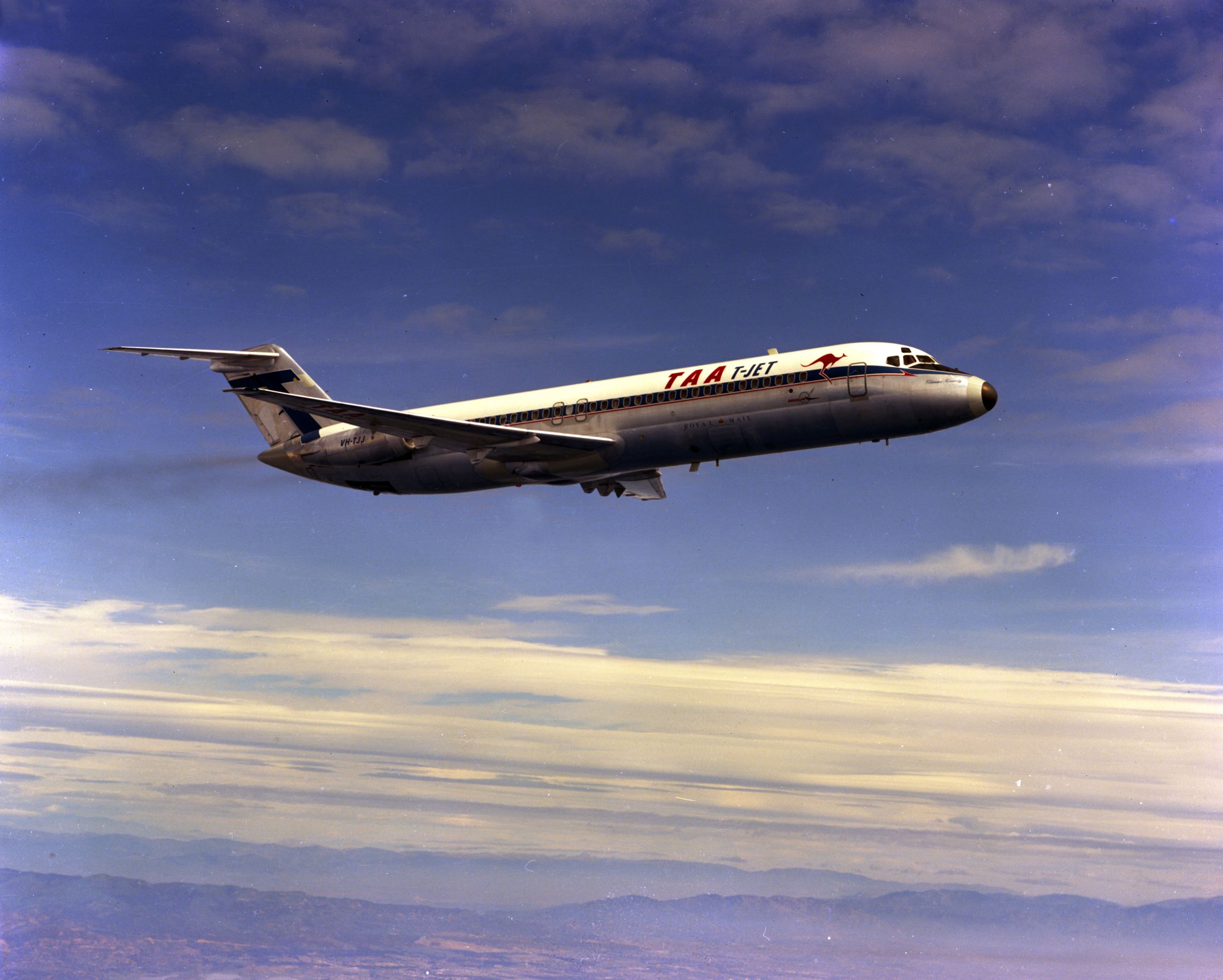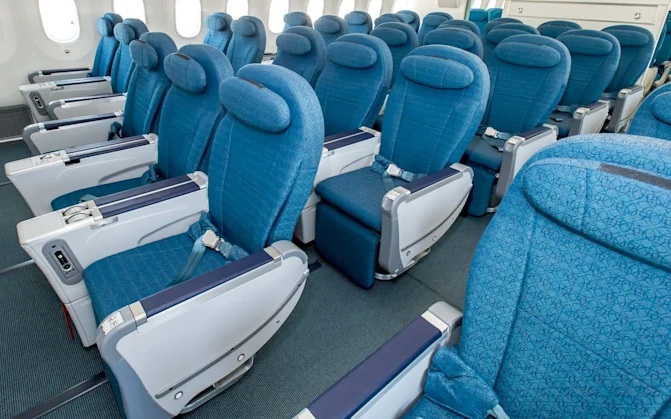
By Geoffrey Thomas
Published Thu Oct 24 2024
Australia has farewelled the amazing Douglas Aircraft Company’s DC-9 twin-jet and its later variants the MD80, MD95 and finally the Boeing 717.
The last 717 flight QJE 1511 (VH-YQS) was conducted today, October 26th, 2024, from Sydney to Canberra in Qantaslink colours. QJE 1511 took off at 5.33 pm (AEST) and landed at 6.07 pm (AEST).
Fittingly there was an Airbus A220, which is replacing the venerable jet, on the taxiway to salute the 717 as she touched down.
The DC-9 series has had an accident-free life in Australia and has proven to be the most rugged jet ever to operate in the country and one of the most reliable.
The first DC-9 landed in Australia in 1967 in the colours of Ansett-ANA and Trans Australian Airlines which each ordered six jets. The order placed in 1965 was followed by a top-up of another six in 1968.


The 24 aircraft gave faithful service to both airlines. Ansett’s last DC-9 was replaced by the Boeing 737-200 in 1982 TAA’s lasted longer, replaced by the 737-300 in 1989.


In 1981 McDonnell Douglas tried to persuade TAA to order the MD-80 (DC-9 Super 80) with a sales tour that included Perth, Melbourne, Canberra and Sydney.
That tour was led by the late Pete Conrad (below), the third man on the moon and commander of Skylab.

Pete Conrad also flew the MD-80 on several sectors.

The tour was unsuccessful in selling to TAA but later McDonnell Douglas secured an order from Ansett Worldwide Leasing Services for 24 MD80s.

Compass Mk 11, an airline formed after Australian deregulation in 1989 purchased five. It commenced operations on 31 August 1992 with three MD-82s and two MD-83s but collapsed on March 4th 1993.
After the merger of Qantas and Australian Airlines (Formerly TAA), MDC pitched the MD80/MD90 series to Qantas.

The next operator was regional airline Impulse Airlines which in June 2000 purchased eight MD95s and re-badged 717s as a result of the Boeing merger.

In 2001 Qantas took over Impulse and the 717s were rebadged QantasLink.
A few years later in 2004, that fleet which had grown to 14 aircraft was used to start Qantas’s low-cost subsidiary Jetstar.

However, those aircraft were quickly moved on to National Jet Systems to operate QantasLink services in Western Australia being replaced by A320s.
In all, Qantas would operate 21 717s, through National Jet Systems.

The fleet has now been sold to Delta Air Lines to be used as spares to support its 88-strong 717 fleet.
Qantas said that after completing more than 15,000 flights, over 17,000 flight hours and safely carrying more than one million customers for QantasLink over almost 11 years, VH-YQS “Great Otway National Park” will spend the next few weeks on the ground in Canberra ahead of its retirement in November.
QantasLink is one of the last three commercial airlines in the world to operate the Boeing 717 aircraft, which were popular for their ability to deliver on high-frequency short to medium routes and serve smaller ports, while carrying around 100 passengers, tapping into a gap in the market for this size aircraft.
QantasLink Chief Executive Officer Rachel Yangoyan said the airline was proud to celebrate and recognise the 717’s history and contribution to aviation in Australia.
“Today marks a significant moment in Australian aviation with the 717’s iconic T-shaped tail taking passengers to Australian skies for the last time,” said Ms Yangoyan.
“The 717 aircraft have a long history in Qantas and Jetstar’s fleet. From being the aircraft that launched Jetstar’s first-ever flights in 2004 to serving major cities, regional towns and the mining sector in the West as part of QantasLink for more than 20 years, we know our people and customers have loved flying on the 717.
“As we farewell the Boeing 717 in Australia and the end of an era, we are excited about the future of QantasLink jet flying onboard the A220 aircraft.
History of the Qantas 717 Fleet
The 717 is a twin-engine jet first marketed by McDonnell Douglas in the early 1990s as the MD-95, until the company merged with Boeing in August 1997. It was affectionately known as Mad Dog due to its MD initials, its power and the noise made by its engines.
156 Boeing 717s were produced with VH-YQW, The Tassie Devil, the last 717 to be built at Boeing’s Long Beach assembly facility in California in 2006.
The 717 aircraft first came into Qantas when the Group acquired Impulse Airways in 2001 flying for QantasLink.
14 of the 717 fleet were converted to support the launch of Jetstar in May 2004 before moving back into QantasLink.

Above: Qantaslink’s VH-YQW in the colours of Midwest Airlines at a ceremony to mark the delivery of the last two 717s from Long Beach California. Qantaslink took delivery of the aircraft in 2014. In the picture are three former McDonnell Douglas Presidents, the late John Brizendine, Jackson McGowan and Bill Gross. Picture: Geoffrey Thomas










